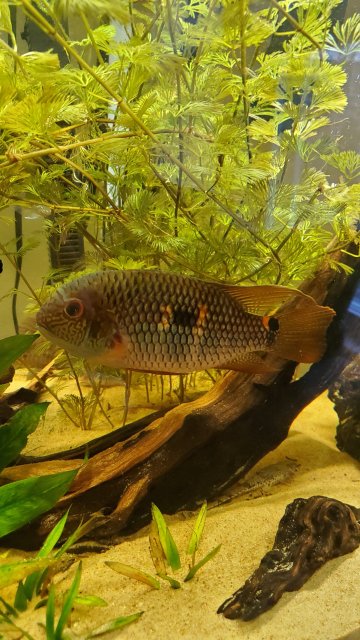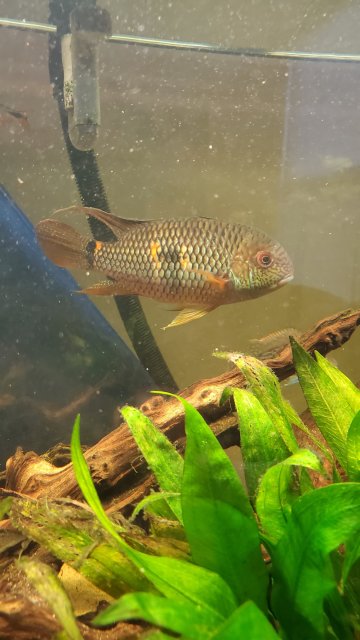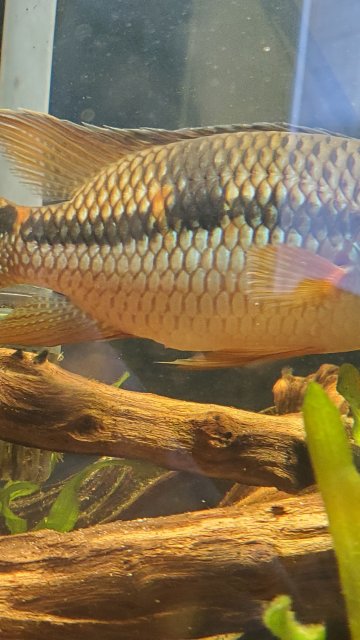I got this fish a little over a year ago, since then it's grown from about 2" to 6" TL. I initially thought this was a male because it's been fairly territorial in the past, but after seeing some pics online I'm thinking this might be a femals. The forehead just doesn't look prominent enough for this to be a male, unless that's something that only develops once the fish is adult size? What do you guys think?







